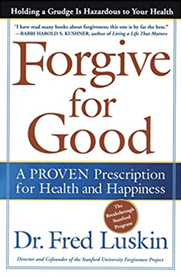|
In the gentle month of April three of the world’s major religions celebrate holidays that promote gentler selves. Ramadan came first this year. Beginning on March 22, this Muslim holy month is marked by fasting from dawn to dusk, prayer, almsgiving, and recitation of the Quran. Those who assist the poor in Ramadan are believed to reap special benefits. Passover, which begins on April 5 this year and continues through April 13, celebrates the deliverance of the Jewish people from slavery in Egypt; Jews fast from leaven, offer special prayers throughout, culminating in the traditional seder meal, which recounts the story of escape from bondage and God’s mercy. Easter, which this year falls on April 9, is preceded by forty days of Lent, also a time of fasting, prayer, and almsgiving. Christians are called to repent of their sins, and reminded that even from the cross, Jesus forgave his persecutors; they are called to love their enemies. Easter Sunday is, of course, the Christian celebration of the Resurrection of Jesus. Do these days and the practices that precede them matter? Well, look at the stats. We have a world population of approximately 7.8 billion, and in April a little more than half of us -- approximately 4.8 billion will be celebrating these feasts. That’s impressive: 1.9 billion Muslims, 14 million Jews, 2.8 billion Christians. Moreover, Buddhists (488 million) join Jews, Christians, and Muslims in recognizing humility as a path to Enlightenment. And Hindus (900 million) see forgiveness as a divine quality and urge the cultivation of humility as a path to spiritual growth. The world’s faiths, in other words, point jointly to some key self-effacing virtues – and more than half of the world’s population adheres to those faiths. Yet the self-effacing virtues are counter-cultural in contemporary society. “What is your superpower?” some college applications ask today’s students. Apparently, the next generation is expected to both possess and flaunt wondrous works. “Don’t get mad; get even” is another piece of common wisdom. Who needs forgiveness when you can have vengeance? Yet when psychologists Christopher Peterson and Martin Seligman compiled their master work Character Strengths and Virtues, they logged forgiveness, mercy, humility, and modesty as essential qualities for temperance, the virtue of self-mastery. And science keeps proving them right.  In 2003 Fred Luskin, M.D. published a path breaking book Forgive for Good, and offered new insight into the medical benefits of forgiveness. His and subsequent psychological research has shown greatly reduced levels of depression, stress, anger, cardiovascular disease, and pain for those who practice forgiveness. Conversely, patient hope, confidence and immune response levels are higher for those skilled in forgiving. And a 2022 study by psychologists Lisa Ross and Jennifer Wright found that humility tracked with lower levels of neuroticism, greater love of life and higher openness to possibility. Other psychological research has established the importance of gratitude for emotional strength, wellbeing, and human flourishing. Forgiveness, humility, and gratitude are all traits that require a recognition that “the world does not revolve around me.” There is something higher. Which raises an interesting question: should our schools be teaching about these faith traditions and celebrations? Many schools, fearful of Church-state conflicts, dodge the topics, but the exemplary Core Knowledge Sequence has never shied away from them as key - at the very least-- to cultural literacy in our highly interconnected world.  In the Core Knowledge World History program students are introduced to the three major monotheistic religions in first grade (Judaism, Christianity, Islam), then introduced to Hinduism and Buddhism in second (partly in conjunction with ancient India); children do a deeper dive on the development of Christianity in third grade with the study of ancient Rome. They learn about the five pillars of Islam and medieval Muslim empires in Fourth Grade, as they do the spread of Christianity and an “age of faith.” They come face to face with the split between European Christians (Catholic and Protestant) in Fifth grade, and the fifth grade Renaissance unit – the extraordinary art of Botticelli, DaVinci, Raphael, and Michelangelo shows the artistic manifestation of these beliefs. Our modern secular age is of very recent vintage and exists side by side with a vast majority of believers (at least 6 billion). Parents are the primary educators of children, and they will decide in the home what they teach their kids about life’s ultimate meaning. But if we neglect the topic of world religion in schools, we fail to teach students what has motivated human beings over time and what still matters profoundly. By teaching about world religions in schools, we introduce kids not just to the past, but also to key wellsprings of wisdom, wellbeing, and virtue. Mary Beth Klee
0 Comments
Your comment will be posted after it is approved.
Leave a Reply. |
AuthorWrite something about yourself. No need to be fancy, just an overview. Archives
July 2024
Categories |
